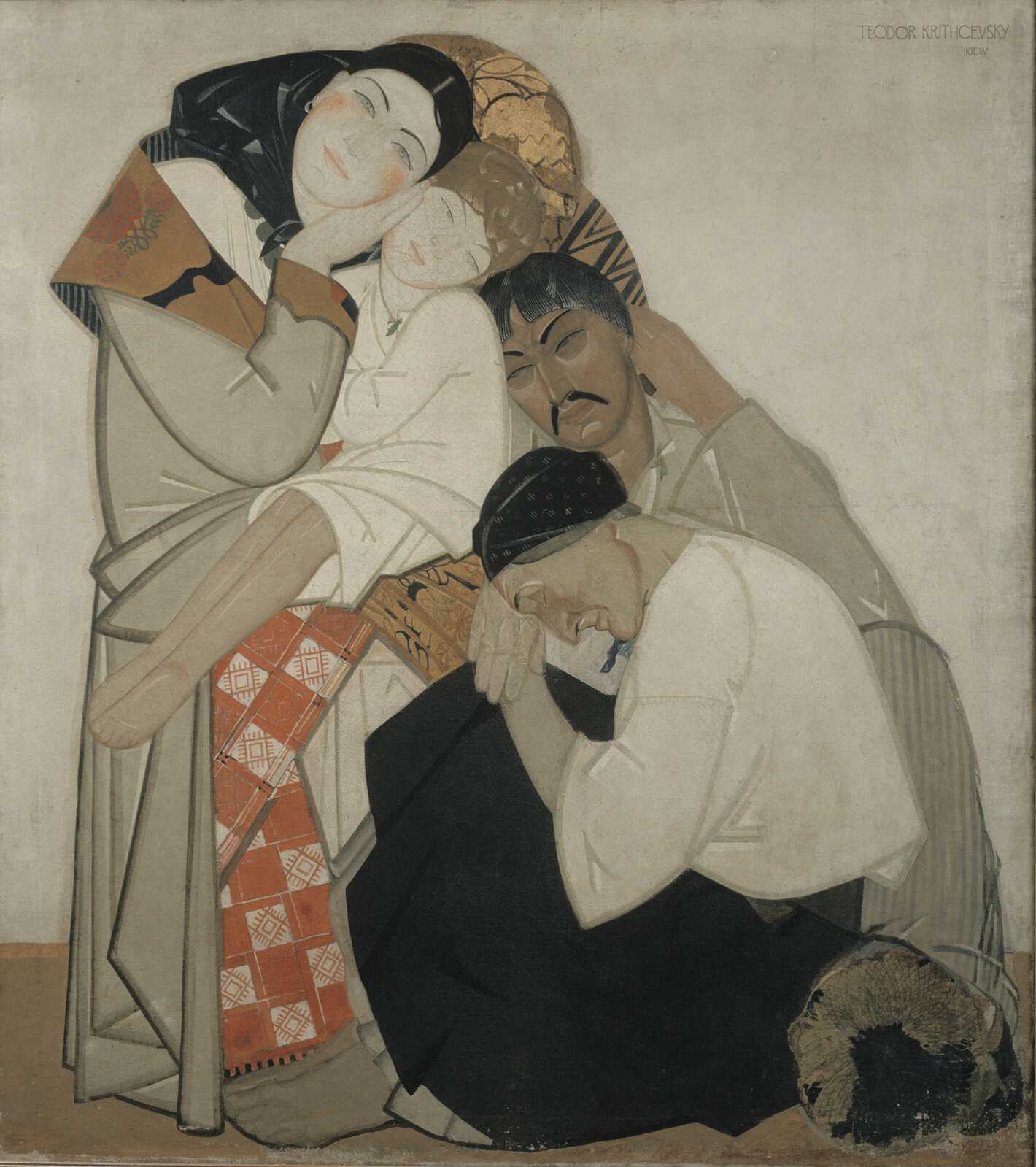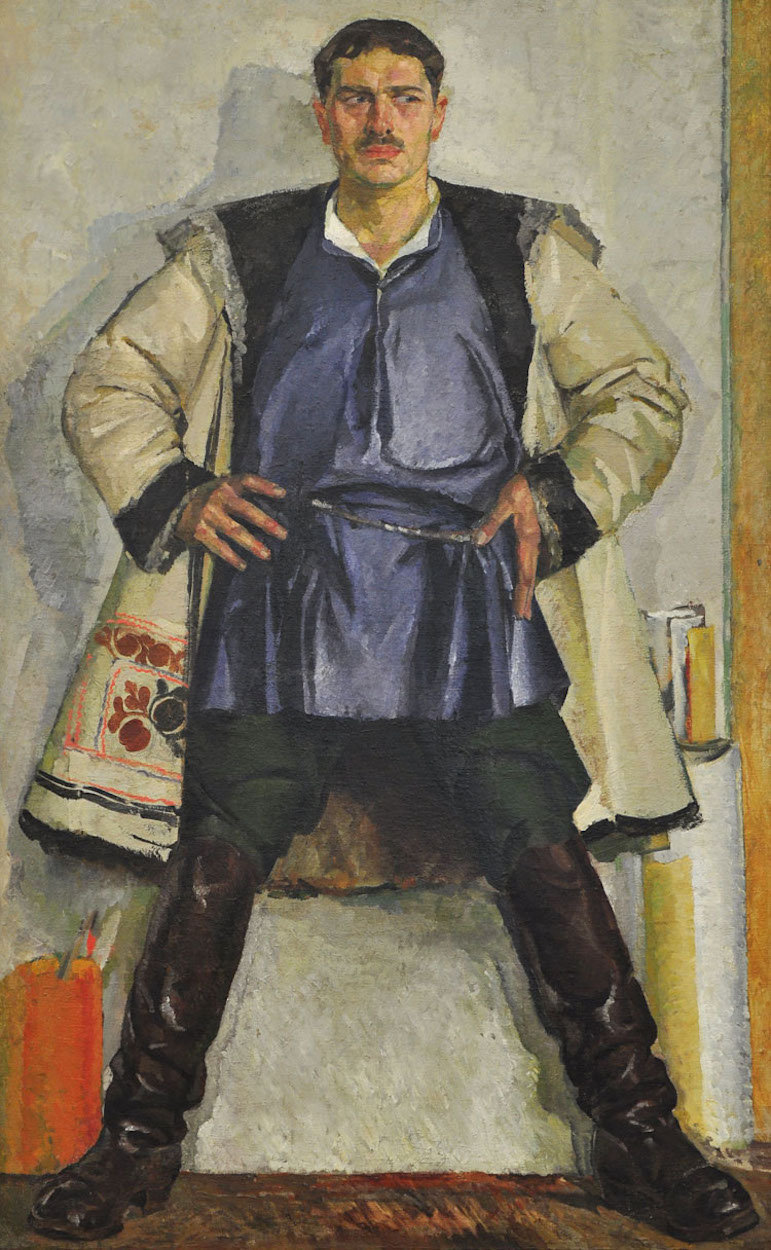Fedir Krychevsky was an influential Ukrainian early modernist painter. In 1917, he was one of the founders and a rector of the Ukrainian State Academy of Arts. When the academy was abolished, he worked as a professor at the Kyiv State Art Institute, eventually becoming its rector. He remained in Kyiv at the onset of the Second World War, and kept his position at the institute, trying to save it in difficult conditions during the German occupation of Kyiv. He served as the chairman of the Union of Ukrainian Artists that tried to improve the conditions of artists during the occupation.
He moved to Königsberg in the summer of 1943 to join his brother Vasyl. He attempted to flee west to escape the advancing Soviet troops, but the train in which he was traveling was overtaken. Krychevsky was arrested by the NKVD as a collaborator, but his interrogations elicited nothing that could incriminate him, so he was stripped of all his titles and honors and sent to internal exile to the village of Irpin near Kyiv, where he died of starvation during the famine in 1947.
As a participator of many international and Ukrainian exhibitions of the 1920s and 1930s, Krychevsky was a favorite of the International Venetian Biennale of 1928, where he first showed the central panel of his highly praised triptych Life. The painting demonstrates a modern treatment of the refined surface (lineal rhythm and the harmony of similar colors), as well as features of medieval monumental wall painting. It combines the elements Art Nouveau and Ukrainian Religious paintings. Life remains one of the iconic examples of Ukrainian modernism. Each painting contains respectively eternal themes of life: love, achievement, and loss.
P.S. Meet Taras Shevchenko, Ukraine's liberty model and most important artist of the 19th century.
P.P.S. If you like to write down your thoughts about art, please check our Art Journals in the DailyArt Shop.


 Fedir Krychevskyi
Fedir Krychevskyi